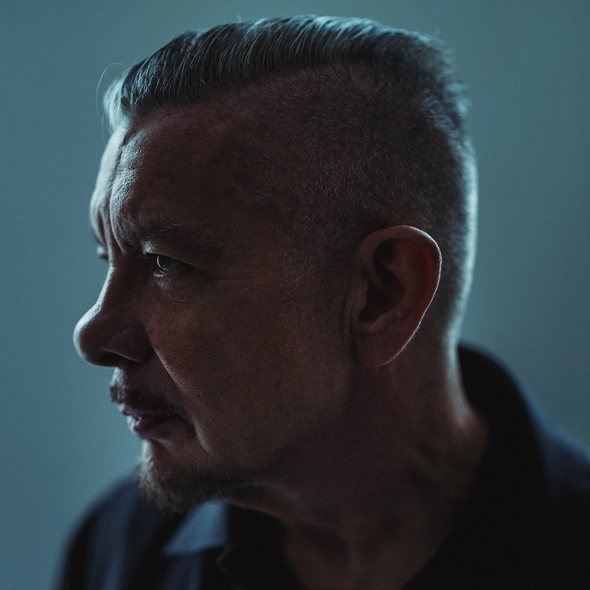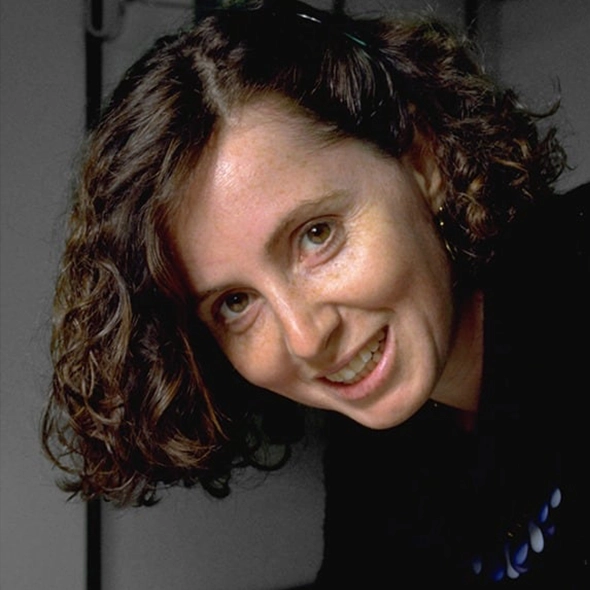How Marian Bantjes Turned Graphic Design into Graphic Art
Marian Bantjes on designing from the heart, turning graphic design into art, and her early encounters with AI that challenged her creativity.

Editor’s Note:
This article is adapted from our podcast interview with Marian Bantjes, originally recorded for Twos Talks and released on the Twos Studio YouTube channel. It has been edited for clarity and format.
In this episode of Twos Talks, we spoke with Marian Bantjes, the Canadian graphic artist whose intricate, emotional, and fiercely personal work has blurred the lines between design and fine art. Bantjes is known for transforming ordinary materials into ornate visual poetry and has long resisted convention. Our conversation turned to a surprising subject: her early fascination with the first versions of AI, how it once fueled her creativity, and how she felt about the changes in AI as it evolved.
From Pasta to AI
Marian Bantjes has long explored everyday materials in her art. She has used objects like pasta, sugar, and stickers to create intricate designs that challenge conventional notions of beauty and craftsmanship. In her book I Wonder, she crafted the word "Honor" using dry pasta, transforming a simple food item into a detailed typographic piece. She describes this approach as "the elevation of the mundane," emphasizing her ongoing interest in turning ordinary objects into art. She also experimented briefly with sugar in a project for Stefan Sagmeister.
When AI image generators first appeared, Bantjes was initially hesitant.
“At first, I really wasn’t interested. I think it took me about four months before I actually tried it. I started it mostly because it was starting to become kind of buzzy.”
When she finally opened the tool and typed her first prompts, she was hooked.

The First AI Experiments
When Bantjes finally tried AI, she was immediately captivated by its unpredictability.
“I started using it and I was just immediately hooked and just started making these weird creatures. One of my generations was lemon-camel. It made me these amalgamations of camels and lemons that were just so crazy.”
Through this, she discovered the thrill of subtle variation.
“I realized that I could regenerate the same image, and it would make the same thing again, only a little bit different.”
This mirrored her long-standing interest in evolving patterns.
“One of my interests in patterning that goes way back to the 90s, is patterns that change as they go… so they’re not just a static pattern.”
The AI-generated objects became a new material for her, leading to her vase series, built from thousands of subtly unique elements. She was drawn to AI because of its unpredictability.
“The last thing a machine is supposed to be is imaginative, but it was incredibly imaginative.”

When AI Became Too Real
As AI evolved, Bantjes found that its imaginative spark began to fade.
“Meanwhile the AI was changing. I noticed that it was becoming more realistic and more literal. To the point that if I typed lemon camel, it would give me a lemon and a camel. At best, it might give me a camel carrying lemons. It really became much less imaginative.”
She became more selective in using AI as it became more literal.
“It was just boring. It wouldn’t give me interesting things. It would just give me normal things. Just very realistic normal things. But that’s not what I wanted.”
Still, she treasures the archive of early AI-generated images she created.
“I’m so glad that I used it at that time and collected all those images.”
AI as a Tool, Not a Substitute
For Bantjes, AI is a tool to expand an artist’s touch, not a replacement for it. Her skepticism is directed at those using AI for entire design projects rather than as a creative aid.
“I hear that people are using AI for design, but I don’t understand how… I’m sure I could generate like the front of a brochure or something and you could swap out the image, but I find that so weird (to use AI for the whole design). It doesn’t make sense to me at all why anybody would do that.”
Want more from Bantjes?
For more insight from this iconic graphic artist, including unseen stories and her thoughts on creativity, experimentation, starting her own independent work, influences, and her story with AI, watch the full interview on our YouTube channel.
 Home
Home Articles
Articles Twos Talks
Twos Talks Videos
Videos

